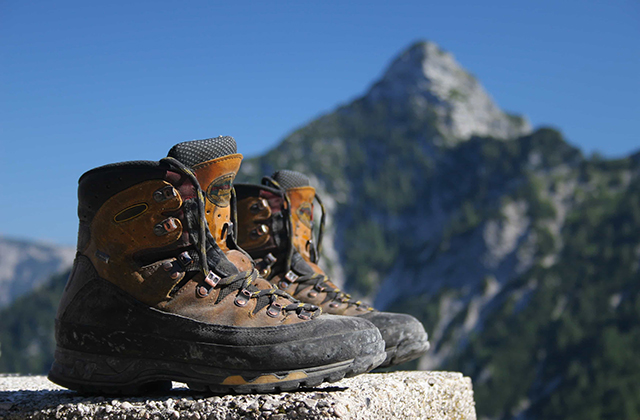Whether you’re a seasoned hiker or completely new to the trails you can get ugg boots for men. There are as many kinds of hiking boots as there are hikers. The specific things to consider when choosing your hiking boots will depend on the kinds of hiking you are planning to do. In this article, I will classify hiking boots (or hiking footwear) into four main types, corresponding to four main types of hiking.
The four types of hiking boots that we will discuss are:
1. Hiking shoes and sandals. For short walks in the outdoors, for knocking around in camp, and for use during easy interludes in an otherwise serious hike.
2. Day-hiking boots. For moderate hiking, such as day hikes or short hikes in very rough country.
3. Backpacking boots. For more serious hiking, like multi-day backpacking expeditions.
4. Mountaineering boots. For the most serious hiking, mountain climbing, and ice climbing.
There is some overlap, of course, and a good deal of mixing.
Most people who use anything beyond hiking shoes also use something in one of the lower categories. For instance, when I go camping, I bring both my day-hiking boots for the all-day hikes and my hiking shoes for the less-serious treks with the grandchildren. As another example, I often see ice climbers arriving at Arethusa Falls wearing day-hiking boots, then switching to mountaineering boots for the actual climb.
For the most part, it will be okay to buy a more serious hiking boot than you need. One exception is that if you really don’t need mountaineering boots, you would probably find them uncomfortably heavy on a little day hike. Don’t go too far upscale. Even the additional cost of buying “more boot than you need” might actually work out to be a savings in the long run, because a better quality boot will likely last longer.
Now, let’s talk about the general concerns and considerations that go into choosing a pair of hiking boots.
Keep in mind that the purpose of footwear is to protect your feet. This amounts to four specific purposes:
1. Warmth, in season
2. Protection from rough surfaces and sharp objects
3. Traction
4. Keeping your feet dry
That’s about it.
Most of what you read about “support” is overblown. If you give your feet and ankles a lot of “support,” the natural support system becomes weak from underutilization. Unless you have some particular weakness in your ankles, whether innate or from an injury, you don’t necessarily need ankle support. Let the muscles and ligaments of your feet and ankles do what they were designed to do, and you will have all the “support” you need.
On the other hand, you do need arch support. Why? Because your feet were designed to walk on a natural, yielding surface that conforms itself to the shape of your feet. When you strap a stiff, unyielding shoe sole to the bottom of your foot, your arches are unduly stressed. You need the bottom of the boot to conform to the shape of the bottom of your foot, and to stay that way as you walk. That’s arch support.
What about men’s versus women’s hiking boots? The only real difference is in proportions. For a given length of foot, a woman’s foot is generally narrower than a man’s and has higher arches. Women’s hiking boots are designed accordingly. If you’re a man with narrow feet and/or high arches, don’t be afraid to look at “women’s” hiking boots, or if you’re a woman with low arches and/or wide feet, the hiking cops won’t give you a ticket for wearing “men’s” hiking boots. Get the hiking boots that fit your feet.
Don’t forget socks. You’ll need warm socks, more than one pair in winter, so make sure your hiking boots allow room for them. When you go shopping for hiking boots, bring the type of socks you intend to wear on hikes, so you can check the fit of the boots with the socks on.
Look for good quality, and expect to pay for it. If you’re looking for fashion and the latest trends, you’ll pay a premium for that, too. What I look for is usually last year’s good quality, so I get the quality I want without paying for the style that I don’t care about.
Here’s a quick guideline to set your expectations about the costs: Expect to pay much more for your hiking boots than for your backpack. The appropriate boots for a given type of hiking will probably cost 1.5 to two times as much as the appropriate backpack. If you are planning to do only one-day hikes with a forty-dollar daypack, you will be well served to look at sixty-dollar day-hiking boots. But if you’re planning to through-hike the Appalachian Trail, you’ll want at least a hundred-dollar expedition backpack and you should be looking seriously at paying $150 or more for your hiking boots.
There are complex engineering trade-offs in hiking boots. Light weight is good. Sturdy is good. Long wearing properties are good. Traction and gripping power is good. Inexpensive is good. But sturdy boots are heavy. Hiking boots with good traction wear quickly. And of those four properties – light weight, sturdiness, long wearing, and good traction – only light weight comes cheaply. So all hiking boots represent compromises among these four qualities.
That’s the big picture with hiking boots. Pick the right type of boot for the type of hiking you’ll be doing, pick the balance you want between weight and sturdiness, and pick the right fit. Then hit the trail!
Chuck Bonner is a lifelong hiker and amateur naturalist, and webmaster of http://www.HikingWithChuck.com For more information about hiking boots and other hiking equipment based on many years on the trail, visit
Article Source: https://EzineArticles.com/expert/Chuck_Bonner/184207
Article Source: http://EzineArticles.com/1195748
